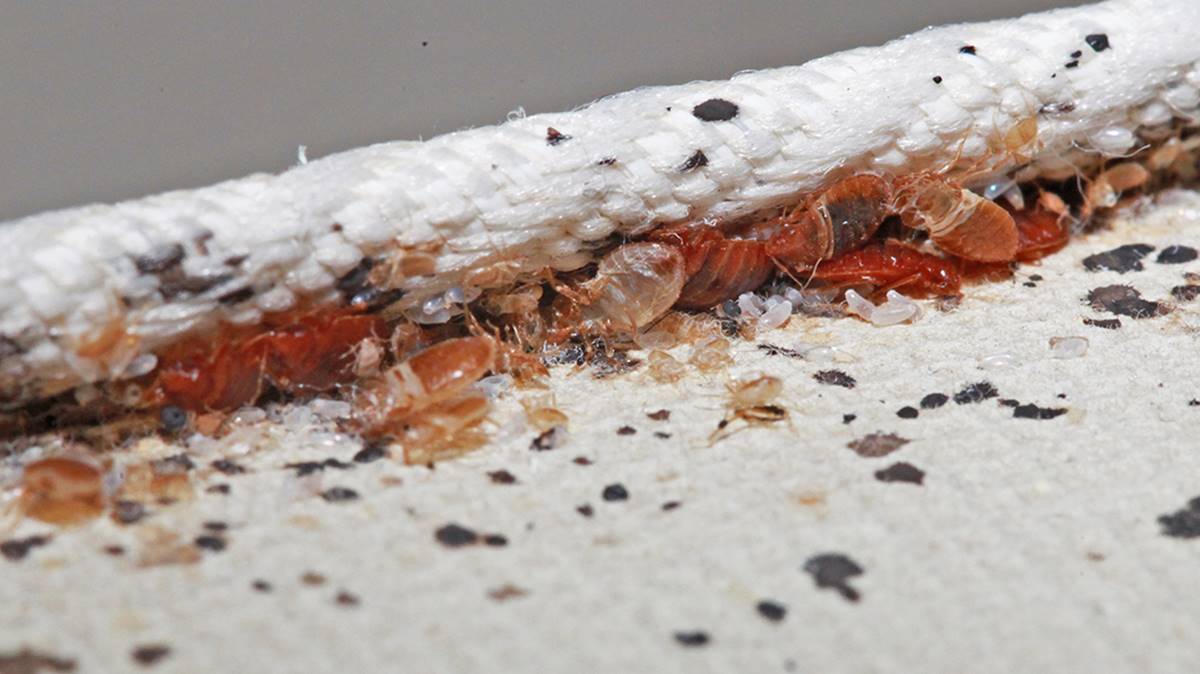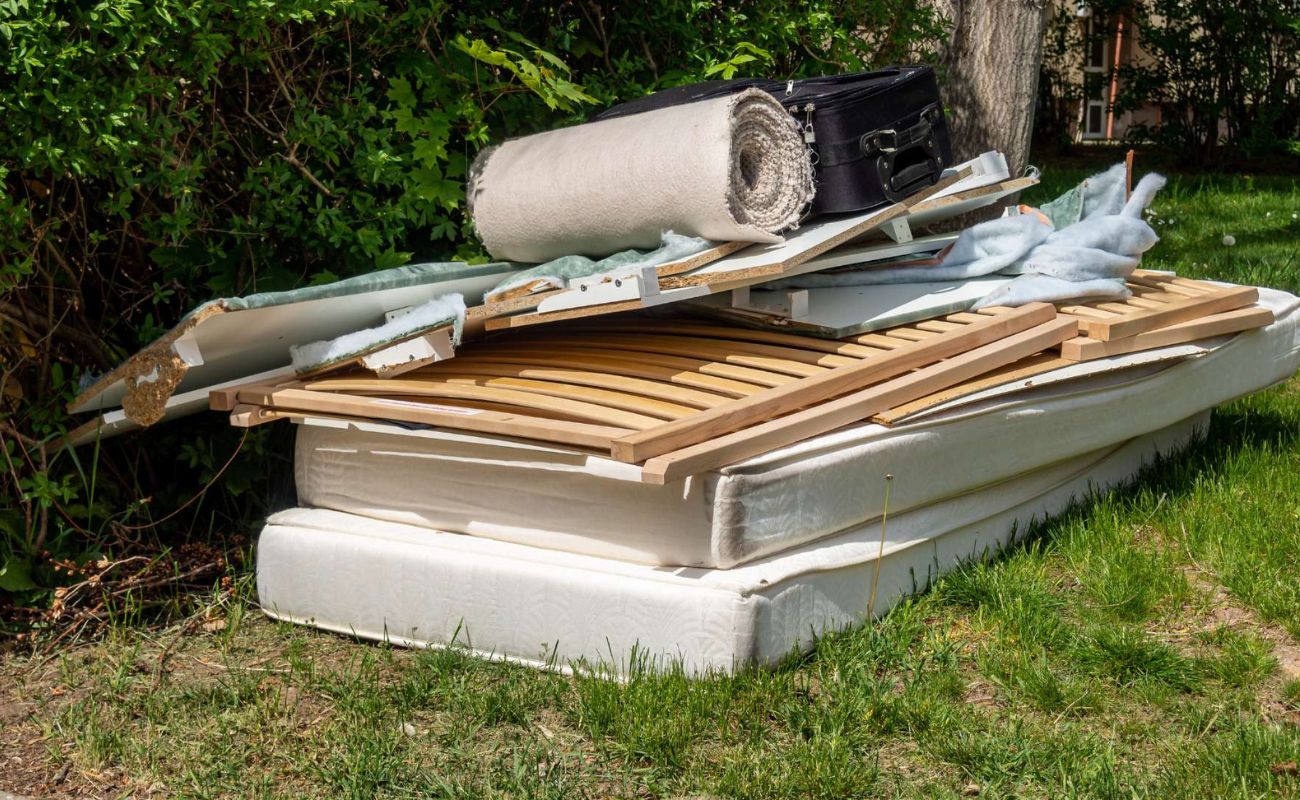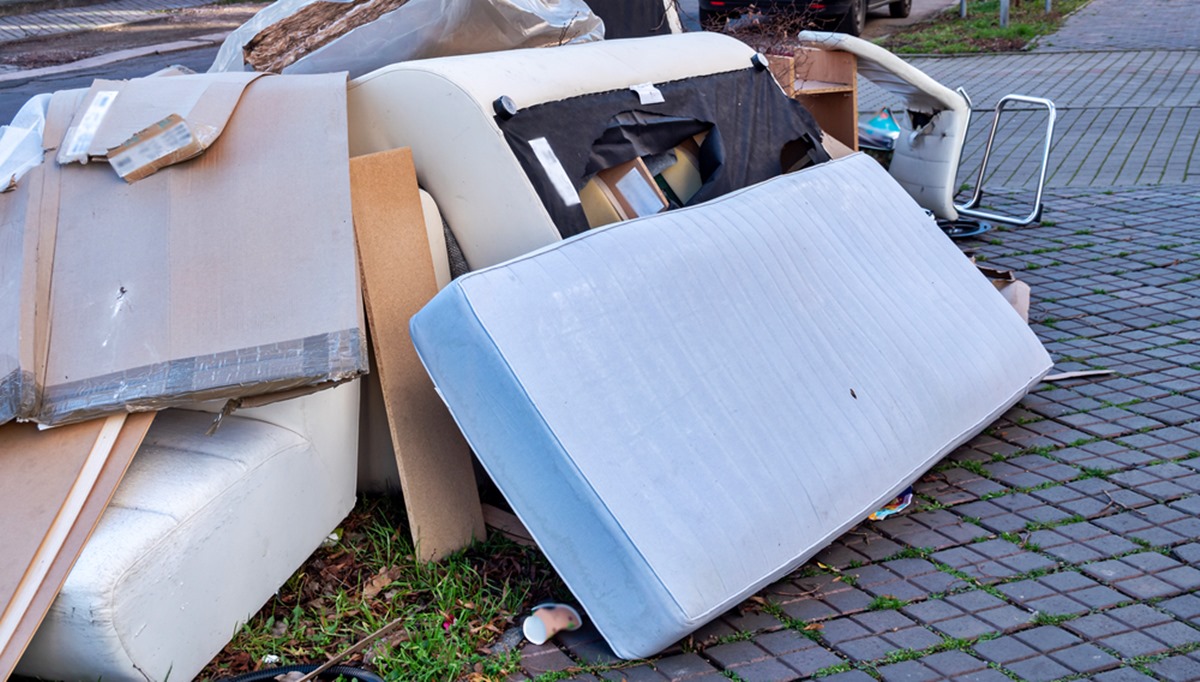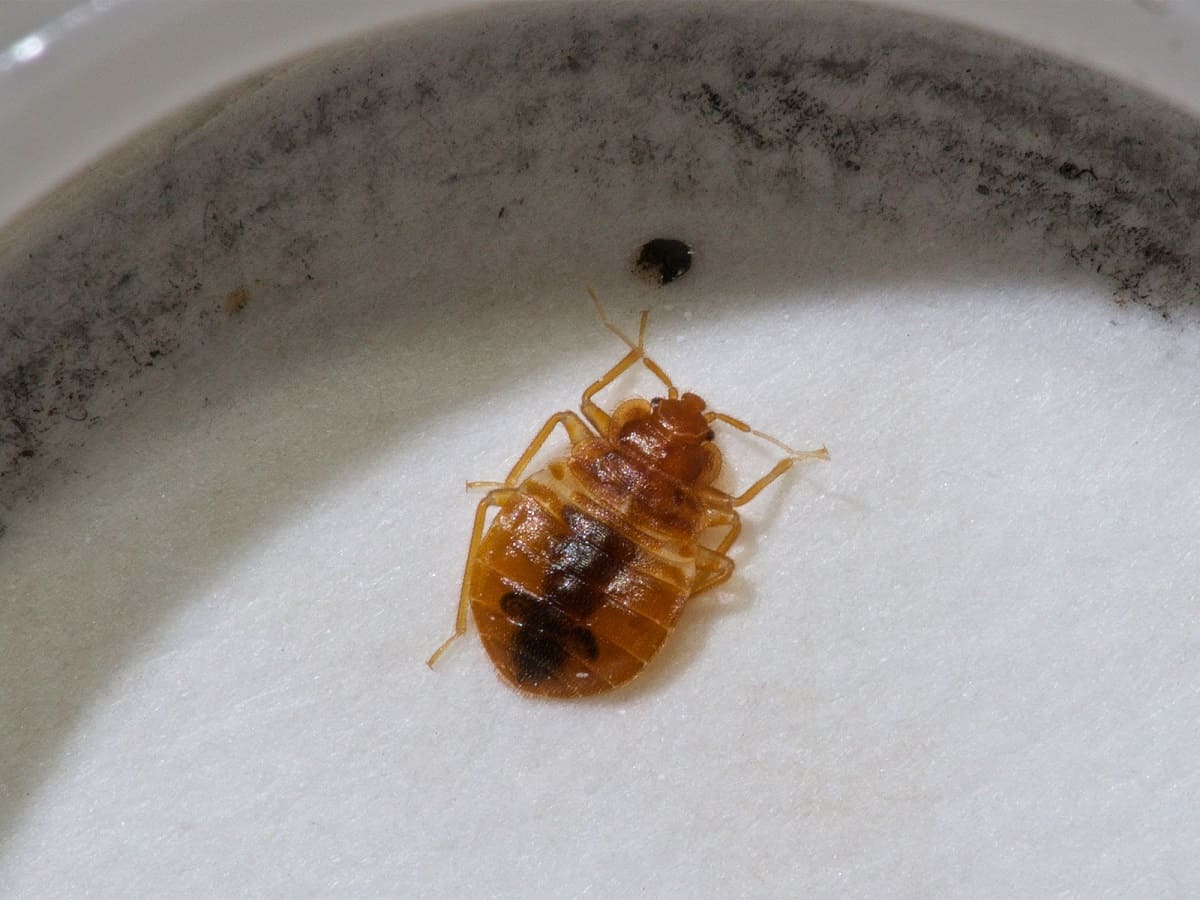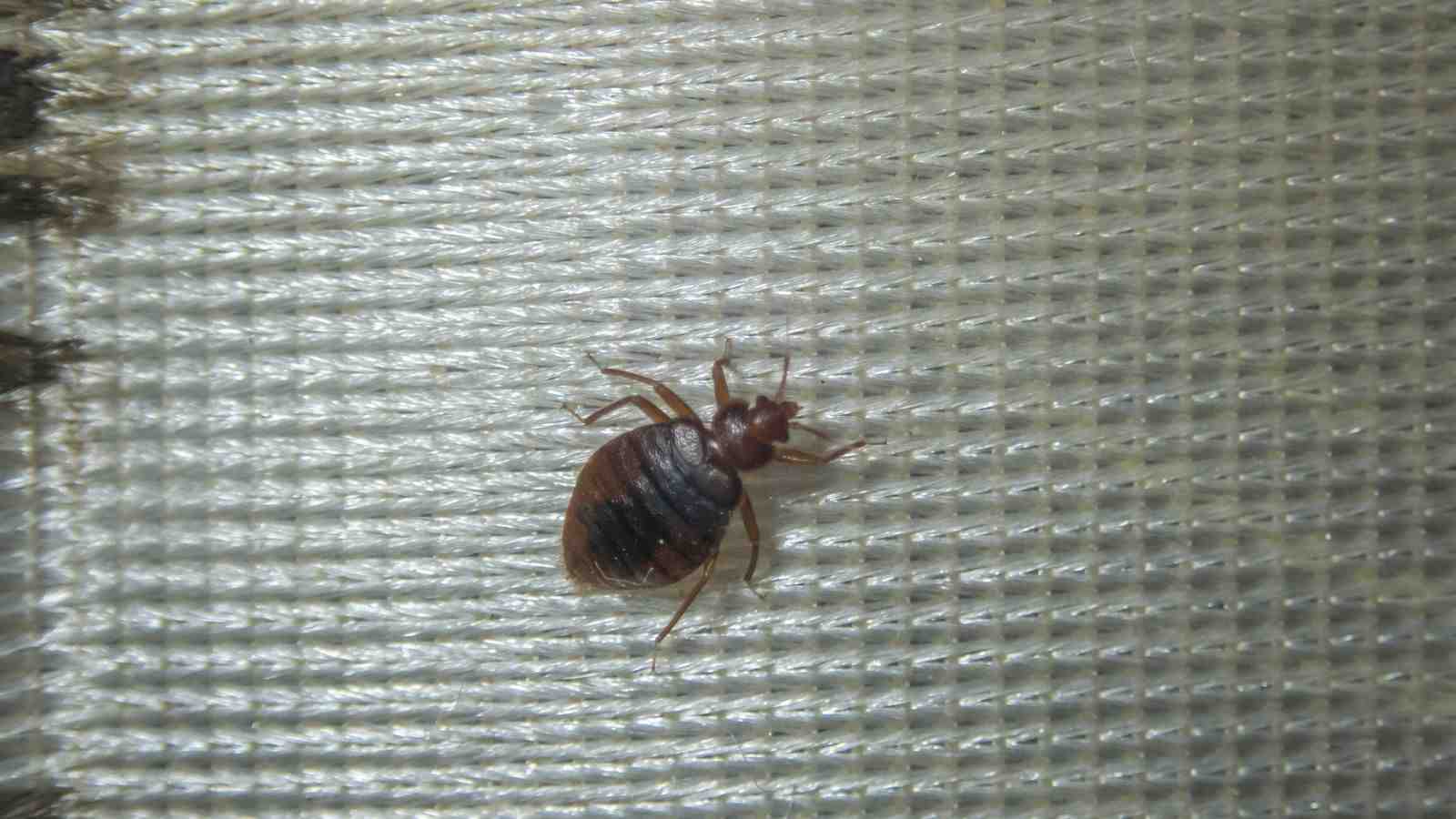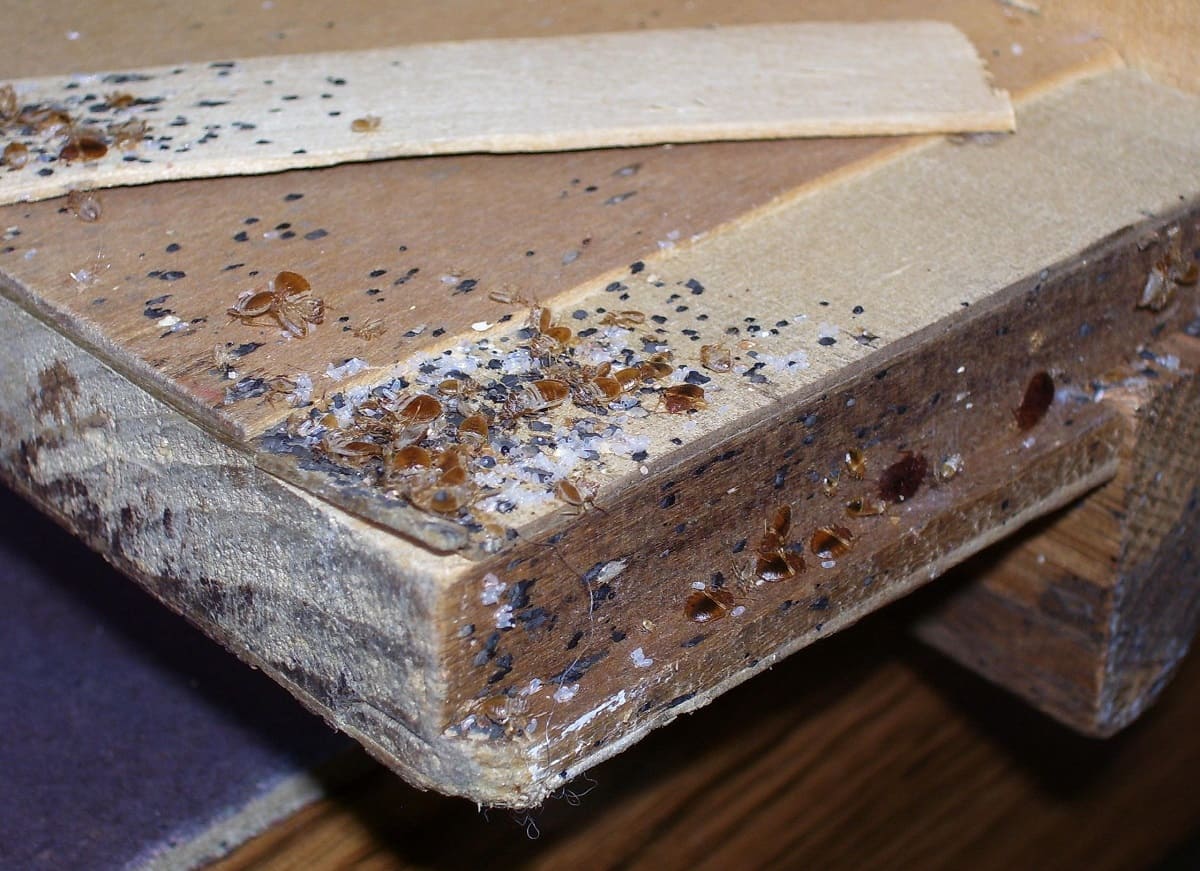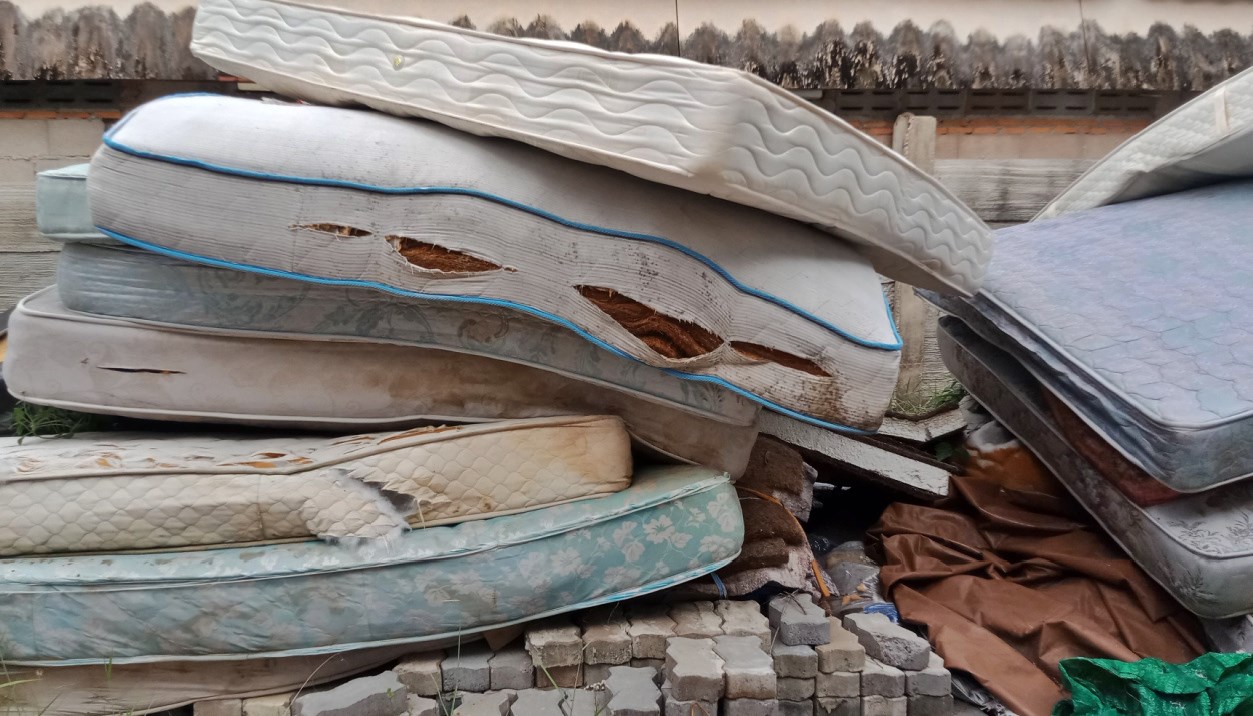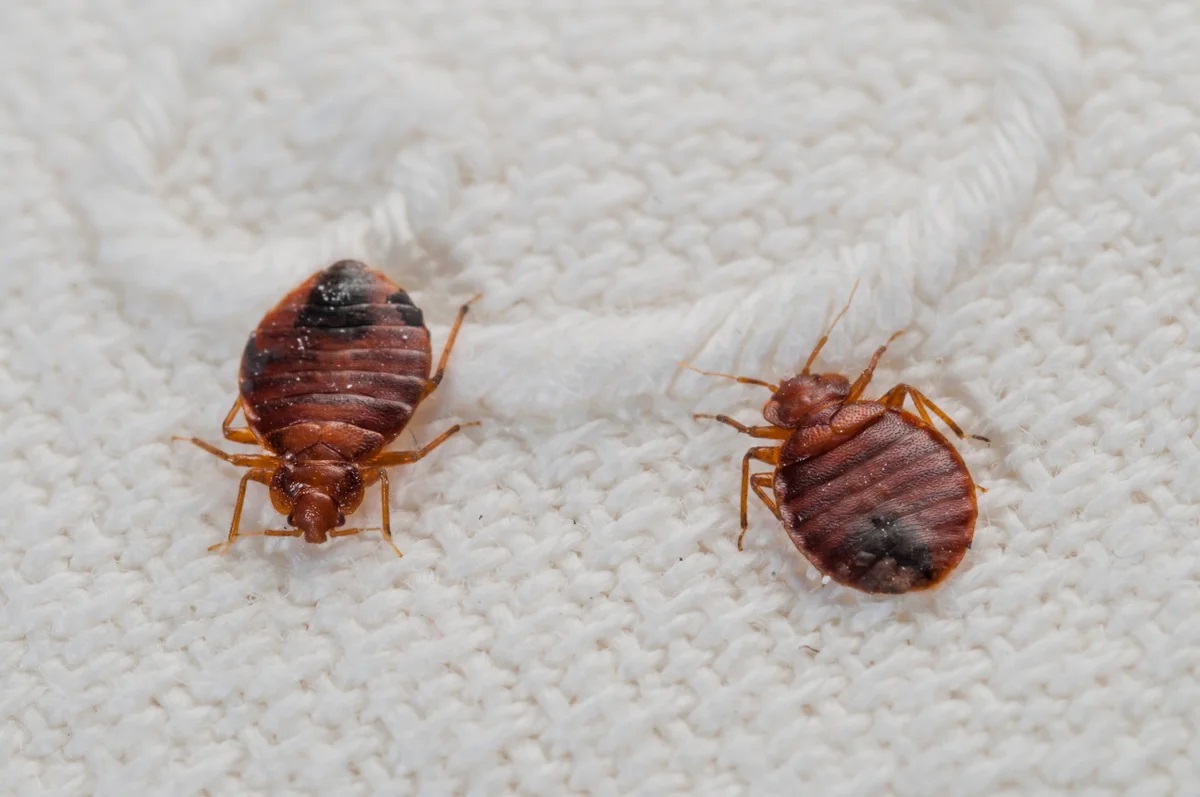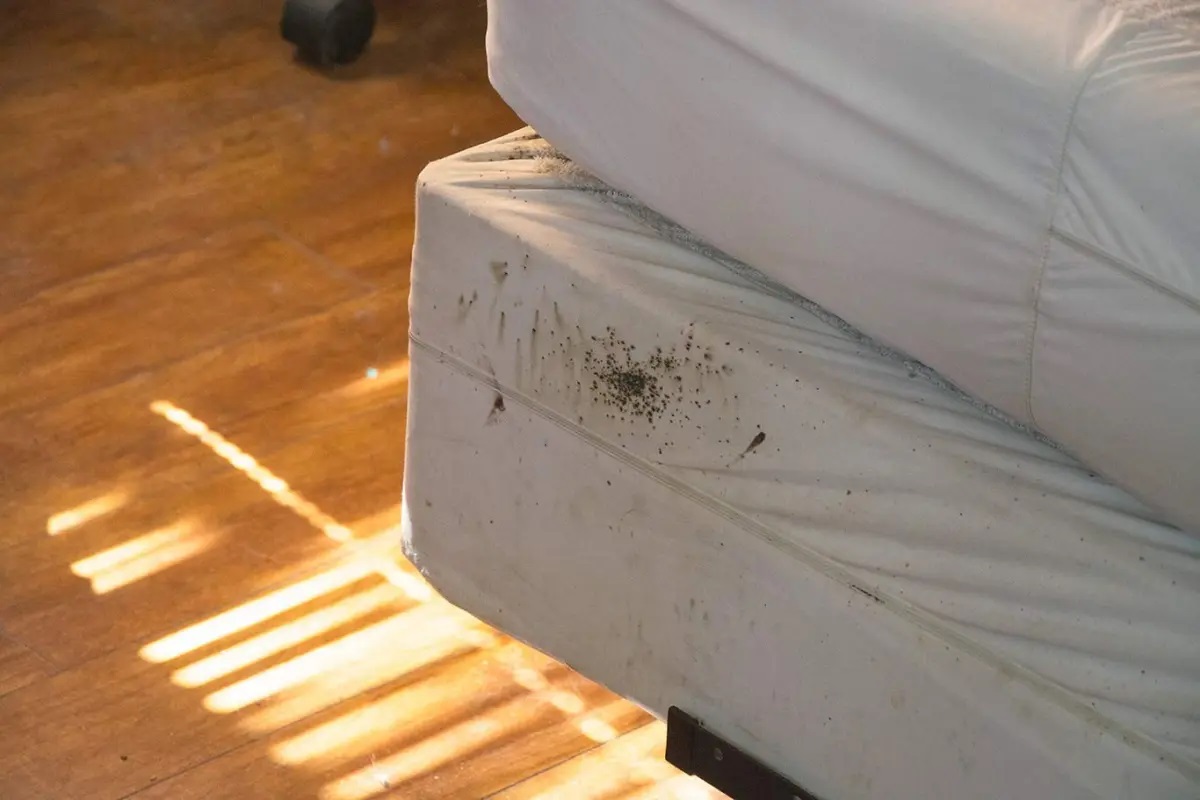Home>Furniture>Bedroom Furniture>How To Dispose Of A Mattress With Bed Bugs
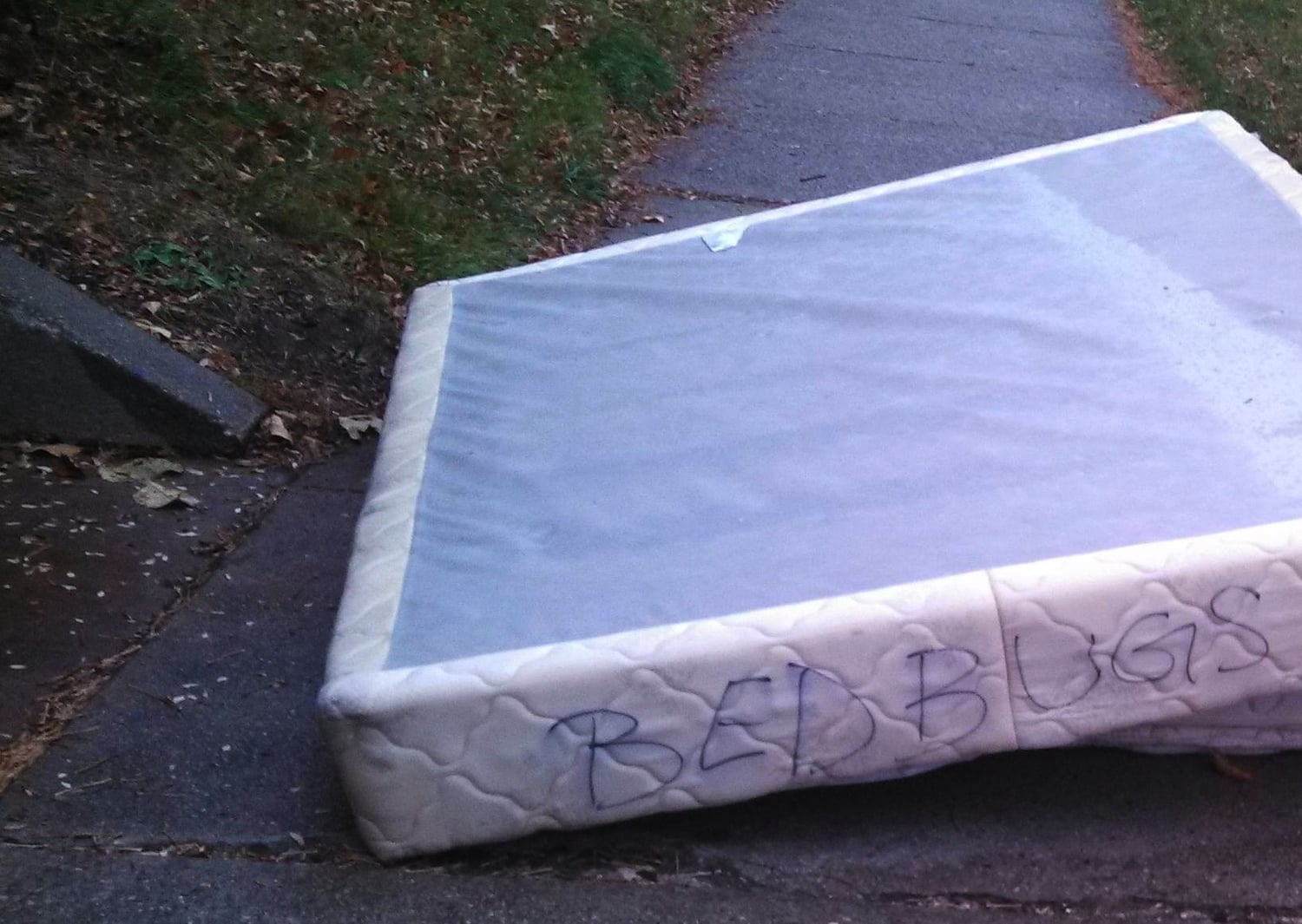

Bedroom Furniture
How To Dispose Of A Mattress With Bed Bugs
Modified: September 1, 2024
Looking for tips on how to dispose of a mattress with bed bugs? Discover the best methods to safely remove your infested bedroom furniture
(Many of the links in this article redirect to a specific reviewed product. Your purchase of these products through affiliate links helps to generate commission for Storables.com, at no extra cost. Learn more)
Introduction
When it comes to bedroom furniture, mattresses are perhaps the most essential and heavily used items. However, there are unfortunate instances when bed bugs infest a mattress, making it unusable and creating a major headache for homeowners. If you find yourself in this situation, it’s important to know how to properly dispose of a mattress with bed bugs to prevent the infestation from spreading.
Dealing with bed bugs is not only a nuisance but can also pose health risks. Bed bugs are small, reddish-brown insects that feed on human blood, typically during the night while we’re asleep. Their bites can cause itching, allergic reactions, and even psychological distress. Therefore, it’s crucial to handle infested mattresses with care to minimize the chances of further infestations.
In this article, we’ll provide a step-by-step guide on how to dispose of a mattress with bed bugs. We’ll discuss various options for mattress disposal, from professional services to DIY methods, and provide tips to ensure proper disposal and prevent reinfestation.
Key Takeaways:
- Proper disposal of a bed bug-infested mattress is crucial to prevent the spread of infestation. Options include professional disposal services, local waste management, donation centers, or DIY methods, each requiring careful containment and adherence to guidelines.
- After disposing of the infested mattress, thorough cleaning, monitoring for reinfestation, and implementing preventive measures are essential to maintain a bed bug-free environment. Diligence and responsible disposal practices are key to protecting your home and family.
Read more: How To Look For Bed Bugs On A Mattress
Step 1: Assess the Infestation
Before you decide on the best course of action for mattress disposal, it’s important to assess the extent of the bed bug infestation. This will help you determine whether the mattress can be salvaged or if it needs to be disposed of immediately.
Start by thoroughly inspecting your mattress for signs of bed bugs. These pests leave behind various telltale signs, including small reddish-brown stains (from their feces), tiny dark spots (which are their exoskeletons), and itchy red welts on your body from their bites. You may also spot live bed bugs crawling around on the mattress or in nearby areas.
If the infestation is localized and confined to one area of the mattress, you may have the option to treat and salvage the mattress. This can be done by hiring a professional exterminator or using DIY bed bug treatment methods. However, if the infestation is extensive, or if you’ve already tried unsuccessfully to eliminate the bed bugs, it’s best to proceed with mattress disposal.
It’s worth noting that merely throwing away the mattress without proper precautions can lead to the spread of bed bugs to other areas of your home or even to neighboring homes. Therefore, responsible disposal is crucial to prevent the infestation from spreading further.
Once you’ve assessed the infestation and determined that disposal is necessary, it’s time to move on to the next step: containment and preparation.
Step 2: Containment and Preparation
Before you proceed with mattress disposal, it’s important to contain the bed bugs to prevent them from spreading during the removal process. Bed bugs are adept at hitchhiking and can easily latch onto clothing, furniture, or other items, making their way to new locations.
To contain the infestation, start by sealing the mattress in a plastic mattress cover or bag. This will help trap any bed bugs that may be hiding in the mattress or its folds. Make sure to securely seal the bag to prevent any bugs from escaping. Additionally, tape the seams and openings of the bag to provide further protection against escapees.
Once the mattress is properly contained, it’s crucial to take additional precautions to minimize the risk of spreading bed bugs during the disposal process. Avoid dragging the mattress across the floor or allowing it to come into contact with other furniture or surfaces. Instead, carefully lift the mattress and place it directly into a vehicle for transport.
It’s recommended to wear protective clothing, such as disposable gloves and long sleeves, to prevent any direct contact with the mattress while handling it. This will help protect you from potential bites and minimize the risk of bed bugs transferring onto your clothing or skin.
Furthermore, it’s important to prepare the area where the mattress will be temporarily stored before disposal. Set up a designated space away from living areas, preferably outdoors, to avoid the risk of bed bugs spreading to other parts of your home. Place a plastic sheet or tarp on the ground, creating a barrier between the infested mattress and the surroundings.
By properly containing the infestation and preparing for removal, you can significantly reduce the chances of bed bugs spreading and ensure a more effective disposal process. With these precautions in place, you’re ready to explore the various options for mattress disposal.
Step 3: Disposal Options for Mattresses with Bed Bugs
When it comes to disposing of a mattress infested with bed bugs, there are several options available. The best choice will depend on your location, resources, and personal preferences. Here are some common disposal options to consider:
Option 1: Professional Mattress Disposal Services
Hiring a professional mattress disposal service is often the most convenient and effective option. These companies specialize in the proper disposal of mattresses and have the necessary knowledge and equipment to handle bed bug-infested items safely. They will typically pick up the mattress from your home and ensure it is disposed of in a manner that prevents further infestation.
Look for reputable disposal services that explicitly state they handle bed bug-infested mattresses. These professionals will follow proper protocols to contain and dispose of the mattress without spreading the bed bugs.
Read more: How To Kill Bed Bugs On A Mattress
Option 2: Municipal or Local Disposal Services
Check with your local municipality or waste management authority to inquire about any specific instructions or procedures for disposing of bed bug-infested mattresses. Some areas may have specific guidelines in place due to the potential health risks associated with improper disposal.
Many municipalities offer regular bulk waste pickup services or have designated drop-off locations for large items like mattresses. Make sure to inform them of the bed bug infestation, and ask if there are any additional requirements or precautions to follow.
Option 3: Donation Centers with Mattress Disposal Programs
Some donation centers or charities have mattress disposal programs that accept bed bug-infested mattresses. These organizations have specialized procedures in place to handle and treat donated mattresses before resale or recycling. Make sure to contact the donation center in advance and confirm if they accept infested mattresses and what their specific requirements are.
Keep in mind that not all donation centers may accept bed bug-infested mattresses due to the potential risk of spreading the infestation. It’s essential to be transparent about the condition of the mattress to ensure the safety of others.
Option 4: DIY Disposal Methods
If you are unable to utilize professional disposal services or find a suitable donation center, you may consider DIY disposal methods. However, it’s important to exercise caution and follow proper precautions to prevent the spread of bed bugs.
One option is to carefully transport the mattress to a local landfill or waste transfer station that accepts mattresses. Make sure to wrap the mattress securely in plastic and inform the facility staff about the bed bug infestation before disposing of it.
Another DIY method is to dismantle the mattress and dispose of its components separately. This may involve removing the fabric, foam, and springs and disposing of them in sealed bags or containers.
Regardless of the disposal method you choose, it’s crucial to follow the specific guidelines provided by the disposal service, municipality, or donation center, and to inform them about the bed bug infestation.
Option 1: Professional Mattress Disposal Services
When it comes to disposing of a mattress infested with bed bugs, hiring a professional mattress disposal service is often the most convenient and effective option. These companies specialize in the proper disposal of mattresses and have the necessary knowledge and equipment to handle bed bug-infested items safely.
The process typically starts with a phone call or online inquiry to schedule a pickup. Be sure to inform the disposal service about the bed bug infestation so they can take the necessary precautions. They may ask you specific questions about the infestation to determine the best approach for disposal.
One of the main advantages of using professional disposal services is that they will come directly to your home to remove the mattress. This eliminates the need for you to transport the infested mattress yourself, reducing the risk of spreading bed bugs to other areas. The professionals are equipped with protective gear and specialized equipment to ensure safe handling and containment of the mattress.
It’s important to choose a reputable disposal service that explicitly states they handle bed bug-infested mattresses. Look for companies with positive reviews and testimonials from customers who have had similar situations. You can also ask for recommendations from friends, family, or local pest control professionals.
When the disposal professionals arrive, they will typically inspect the mattress to assess the extent of the infestation. They will then take necessary measures to contain the bed bugs and prevent any further spread. This may involve sealing the mattress in a specially designed plastic cover or bag.
Once the mattress is properly contained, the disposal service will transport it to a designated facility for safe disposal. Depending on the service, the mattress may be incinerated, treated with heat, or processed for recycling, ensuring that any remaining bed bugs are effectively eliminated.
Using professional mattress disposal services not only ensures the proper disposal of the infested mattress but also helps prevent the spread of bed bugs to other areas. These services are experienced in handling bed bug infestations and have the necessary expertise to minimize health risks associated with improper disposal.
However, it’s worth noting that professional disposal services may come with a cost. Prices can vary depending on factors such as location, size of the mattress, and the extent of the infestation. It’s recommended to inquire about the cost and obtain a quote before scheduling the pickup.
Overall, opting for a professional mattress disposal service provides peace of mind in knowing that the infested mattress will be safely removed and properly disposed of, reducing the risk of further infestations in your home.
Read more: How To Get Rid Of Bed Bugs On A Mattress
Option 2: Municipal or Local Disposal Services
Another option for disposing of a mattress infested with bed bugs is to utilize municipal or local disposal services. Many municipalities offer regular bulk waste pickup services or have designated drop-off locations for large items like mattresses.
To explore this option, start by contacting your local municipality or waste management authority. Inquire about any specific instructions or procedures for disposing of bed bug-infested mattresses. Some areas may have specific guidelines in place due to the potential health risks associated with improper disposal.
If your municipality offers bulk waste pickup, find out the schedule and guidelines for mattress disposal. In some cases, you may need to make a special request or follow specific instructions such as wrapping the mattress in plastic before placing it outside for pickup.
If there are designated drop-off locations for large items, ask about any requirements or restrictions when it comes to bed bug-infested mattresses. They may have specific protocols in place to ensure proper containment and disposal of infested items.
When utilizing municipal or local disposal services, it’s important to follow their guidelines to prevent the spread of bed bugs. Properly wrap the mattress in plastic and secure it to minimize the chances of bed bugs escaping during transportation or handling. Inform the disposal service staff about the bed bug infestation when you drop off the mattress or during collection.
It’s worth noting that these services may have limitations in terms of availability and frequency of pickups. Be sure to plan accordingly and inquire about any potential fees or additional requirements for mattress disposal. Some municipalities may charge a fee for bulky item pickups, so it’s important to be aware of any associated costs.
In some cases, you may be required to transport the mattress to a designated drop-off location yourself. Make sure to secure the mattress properly in your vehicle to prevent bed bugs from spreading during transportation.
Utilizing municipal or local disposal services can be a cost-effective option for mattress disposal, especially if there are no specific restrictions on bed bug-infested items. While it may require more effort on your part compared to hiring professional services, it provides a responsible and regulated method of disposing of the infested mattress.
Remember to follow the guidelines set by your local waste management authority and inform them about the bed bug infestation to ensure a safe and effective disposal process.
Option 3: Donation Centers with Mattress Disposal Programs
If you’re looking for an alternative to traditional mattress disposal methods, you may consider donation centers with mattress disposal programs. Some charitable organizations and donation centers have specialized procedures in place to handle and treat donated mattresses, including those infested with bed bugs.
When considering this option, it’s important to keep in mind that not all donation centers may accept bed bug-infested mattresses. Bed bugs pose a risk of spreading the infestation to other areas, so many organizations have specific protocols in place to ensure the safety of their staff and recipients.
Start by researching local donation centers in your area and inquire about their mattress disposal programs. Make sure to inform them upfront about the bed bug infestation and ask if they accept such mattresses. Some organizations may have specific requirements for accepting infested mattresses, such as wrapping them securely in plastic or undergoing a treatment process before donation.
By donating an infested mattress to a center with a disposal program, you give them the opportunity to properly treat and eliminate the bed bugs before resale or recycling. This not only helps prevent the spread of the infestation but also gives the mattress a chance to be reused and benefit someone in need.
It’s important to note that donation centers may have certain limitations or restrictions when it comes to bed bug-infested mattresses. Some organizations may only accept mattresses of a certain age or condition, while others may have a limit on the number of infested mattresses they can process at a given time.
Contact the donation center in advance to inquire about their acceptance criteria and any specific procedures you need to follow. This will ensure that your infested mattress can be properly processed and disposed of without posing a risk to others.
Before donating the mattress, make sure to wrap it securely in plastic to prevent bed bugs from escaping during transport. Inform the donation center staff about the infestation when dropping off the mattress, so they can take appropriate precautions during handling and processing.
Donating an infested mattress to a center with a mattress disposal program not only helps with responsible disposal but also contributes to the organization’s mission of helping those in need. It’s a sustainable option that allows the mattress to be repurposed or recycled, benefiting both the environment and potential recipients.
Remember to reach out to the donation center in advance, inform them about the bed bug infestation, and follow their specific guidelines to ensure a smooth and successful mattress disposal process.
Option 4: DIY Disposal Methods
If professional mattress disposal services or donation centers are not available or suitable options for disposing of a mattress infested with bed bugs, you may consider DIY disposal methods. While this option requires more effort on your part, it can still be effective with proper precautions to prevent the spread of bed bugs.
It’s important to note that DIY disposal methods should only be used if you are confident in your ability to handle the infested mattress safely and responsibly. Here are some DIY disposal methods to consider:
1. Transporting to a Landfill:
If your local landfill or waste transfer station accepts mattresses, you can transport the infested mattress there for disposal. Before doing so, make sure to securely wrap the mattress in plastic to prevent bed bugs from escaping during transportation. Inform the landfill staff about the bed bug infestation when you arrive.
Read more: How Do Bed Bugs Get Inside A Mattress
2. Dismantling and Disposing of Components:
Another DIY method is to dismantle the mattress and dispose of its components separately. Start by removing the fabric cover, foam layers, and springs. Seal each component in separate bags, ensuring they are securely closed to prevent bed bugs from escaping. Dispose of these bags in a designated waste bin or bring them to a local waste disposal facility.
3. Freezing Method:
Freezing can be an effective DIY method to eliminate bed bugs. Place the infested mattress in a large freezer if you have one that can accommodate its size. Ensure that the temperature reaches at least -18 degrees Celsius (-0.4 degrees Fahrenheit) and leave the mattress in the freezer for several days. Freezing can kill the bed bugs and their eggs. Afterward, securely wrap the mattress in plastic before disposing of it.
4. Heat Treatment:
Heat treatment is another option to consider. If you have access to a steam cleaner or a portable bed bug heat treatment system, follow the manufacturer’s instructions to treat the infested mattress. The high heat will effectively kill the bed bugs. After the treatment, wrap the mattress in plastic and dispose of it properly.
Regardless of the DIY disposal method you choose, it’s crucial to follow proper precautions to prevent the spread of bed bugs. Wear gloves and protective clothing during the handling process, and avoid dragging the mattress to prevent bed bugs from falling off and infesting other areas.
If you choose to dismantle the mattress, make sure to seal all components securely in plastic bags before disposal. Inform waste disposal facility staff about the bed bug infestation and any special precautions they should take.
DIY disposal methods require careful planning and execution to minimize the risk of bed bug spread. It’s important to prioritize your safety and take all necessary precautions to avoid personal contact with the infested mattress and prevent further infestations.
Remember, DIY disposal methods should only be considered if professional services or donation centers are not available or suitable options for your situation. It’s essential to comply with local regulations and guidelines for waste disposal to ensure a responsible and effective mattress disposal process.
Step 4: Final Steps to Ensure Proper Disposal and Prevent Reinfestation
After you have disposed of the mattress infested with bed bugs, there are a few final steps you should take to ensure proper disposal and prevent reinfestation. These steps are crucial in minimizing the risk of bed bugs spreading to other areas of your home or returning in the future.
Read more: How To Get Rid Of Bed Bugs From A Mattress
1. Clean and Treat Surrounding Areas:
Thoroughly clean the area where the infested mattress was located. Vacuum the floor, baseboards, and any nearby furniture to remove any bed bugs or eggs that may have fallen off during the disposal process. Use a HEPA filter vacuum, if possible, to ensure efficient removal of micro-sized particles.
Once cleaned, consider applying a residual insecticidal spray or dust in the surrounding areas to kill any remaining bed bugs and prevent reinfestation. Follow the product instructions carefully and wear protective gear as recommended.
2. Inspect and Treat Other Furniture and Bedding:
Bed bugs can easily spread to other furniture and bedding in your home. Thoroughly inspect nearby items, such as upholstered furniture, pillows, and bedding, for any signs of infestation. If necessary, treat these items using appropriate bed bug treatment methods.
Wash and dry your bedding, including sheets, pillowcases, and blankets, on high heat settings. Bed bugs and their eggs cannot survive the extreme temperatures, helping to eliminate any potential infestations.
3. Monitor for Signs of Reinfestation:
Even after disposing of the infested mattress and treating surrounding areas, it’s important to remain vigilant for any signs of reinfestation. Continuously monitor your bedroom and other areas of your home for the reappearance of bed bugs.
Regularly inspect your mattress, furniture, and bedding for signs such as fecal stains, shed exoskeletons, or live bed bugs. If you notice any indication of a new infestation, take immediate action to treat it before it becomes more extensive.
4. Take Preventive Measures:
To prevent future bed bug infestations, take preventive measures such as regularly vacuuming your home, sealing any cracks or crevices where bed bugs can hide, and using mattress encasements designed to trap and prevent bed bugs from infesting your mattress.
Be cautious when acquiring used furniture, especially mattresses, and inspect them thoroughly for any signs of bed bugs before bringing them into your home.
By following these final steps, you can ensure the proper disposal of the infested mattress and minimize the risk of bed bug reinfestation. Regular monitoring and preventive measures will help you maintain a bed bug-free environment and provide you with peace of mind.
Read also: 12 Superior Bed Bug Mattress Cover for 2025
Conclusion
Dealing with a mattress infested with bed bugs can be a challenging and frustrating experience, but proper disposal is essential to prevent the spread of the infestation and protect your home and family. By following the steps outlined in this guide, you can ensure a responsible and effective mattress disposal process.
Assessing the infestation is the first step, determining whether the mattress can be salvaged or if disposal is necessary. Containment and preparation are crucial to prevent the spread of bed bugs during the removal process. Options such as professional mattress disposal services, municipal or local disposal services, donation centers with mattress disposal programs, or DIY methods offer various choices for disposing of the infested mattress.
Professional mattress disposal services provide convenience and expertise in handling bed bug infestations, while diligent communication with municipal or local disposal services can ensure proper adherence to guidelines for safe disposal. Donation centers with mattress disposal programs offer a sustainable option for repurposing the mattress and benefiting those in need. DIY disposal methods should only be considered when professional services or donation centers are unavailable and require careful precautions to prevent the spread of bed bugs.
Finally, taking final steps such as cleaning and treating surrounding areas, inspecting and treating other furniture and bedding, monitoring for signs of reinfestation, and implementing preventive measures will help ensure proper disposal and prevent future bed bug infestations.
Remember, bed bug infestations can happen to anyone, and it’s essential to approach the situation proactively, diligently, and responsibly. If you’re unsure about the best course of action or require assistance, consult with a professional pest control company or reach out to local authorities for guidance.
By following the steps and recommendations presented in this guide, you can effectively dispose of a mattress infested with bed bugs, protect your home from further infestations, and restore peace and comfort to your bedroom.
Frequently Asked Questions about How To Dispose Of A Mattress With Bed Bugs
Was this page helpful?
At Storables.com, we guarantee accurate and reliable information. Our content, validated by Expert Board Contributors, is crafted following stringent Editorial Policies. We're committed to providing you with well-researched, expert-backed insights for all your informational needs.
